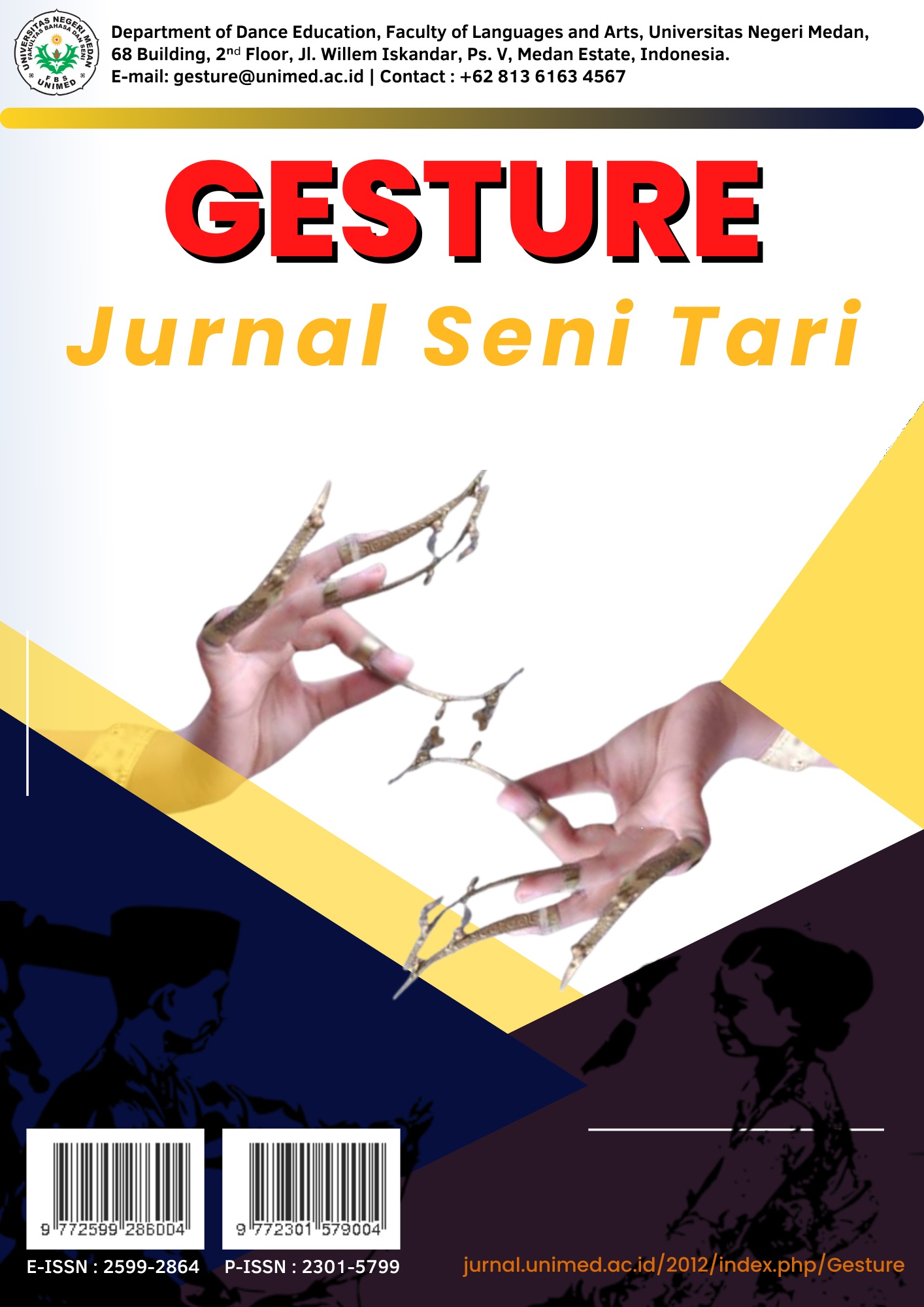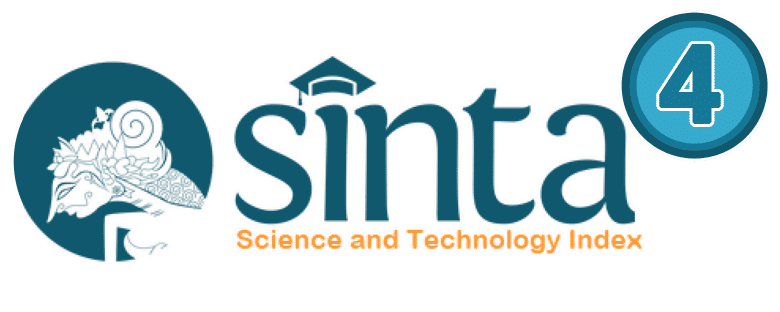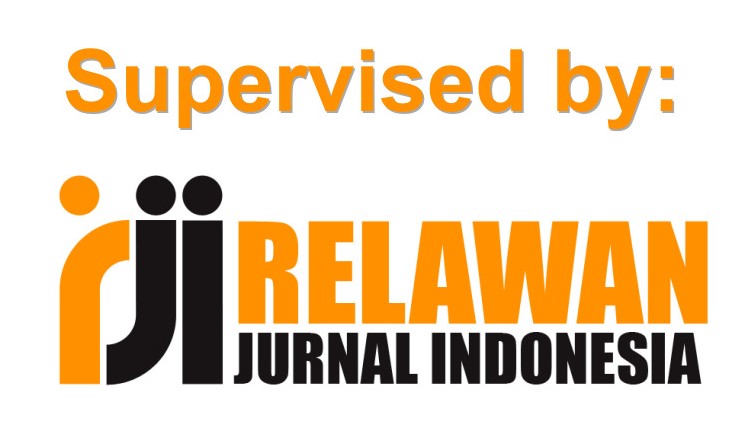Pengemasan Materi Ajar Tari Gobuk melalui Aplikasi Youtube untuk Siswa Sekolah Menengah Atas
DOI:
https://doi.org/10.24114/gjst.v14i2.69521Abstract
This study aims to describe the steps of Gobuk Dance packaging as teaching material through the Youtube application to display uploads containing Gobuk Dance in accordance with the Merdeka Curriculum, Phase E Learning Outcomes, namely: "Students are able to show and identify the meaning of creative dance according to the basic and supporting elements of dance works based on personal perspectives". The research location was carried out at the Yusda Arts Institute, Tanjung Tiram District, Batubara Regency in May-July 2024. A sample of 6 dancers. Data collection techniques were carried out by observation, interviews, documentation and validation tests. The research methodology uses ADDIE development. The results of the study explain the meaning of dance based on the main elements and supporting elements of the Gobuk Dance uploaded via the Youtube Application with a total duration of 16.00 minutes. This teaching material has passed the material feasibility test getting an average score of 4.7 and the media feasibility test getting an average score of 4.6 where from the score obtained this product is said to be worthy to be used as teaching material in learning activities for Senior High Schools.References
Arsyad, Azhar. (2013). Media Pembelajaran. Jakarta: PT Raja Grafindo Persada.
Asyhar, Rayandra. (2011). Kreatif Mengembangkan Media Pembelajaran. Jakarta: Gaung Persada (GP) Press Jakarta.
Dalimunthe, W. R., Heniwaty, Y., & Rahmah, S. (2020). Pengembangan Buku Ajar Tari Simalungun Berbasis High Order Thinking Skills (Hots) dalam Mengatasi Kurangnya Bahan Ajar Materi Budaya Lokal Sumatera Utara. Jurnal Seni Tari, 9(2), 151-159. http://journal.unnes.ac.id/sju/index.php/jst
Giawa, L. L. S. W., & Rahmah, S. (2021). Pengemasan Pembelajaran Tari Moyo Dalam Audio Visual Untuk Siswa Sekolah Menengah Pertama Kelas Viii Di Sumatera Utara. Gesture, 2301, 5799.
Julianti, Sri. (2018). The Art Of Packaging. Jakarta: PT Gramedia Pustaka Utama.
Lestari, Renda. (2017). Penggunaan YouTube sebagai Media Pembelajaran Bahasa Inggris. Makalah Seminar Nasional Kedua Pendidikan Berkemajuan dan Menggembirakan, Universitas Muhammadiyah Surakarta. (Online), https://publikasiilmiah.ums.ac.id/bitstream/handle/11617/9566/68.pdf?sequence=1&isAllowed=y
Lirahman, R., & Heniwaty, Y. (2019). Pengembangan pembelajaran tari lenggok mak inang melalui multimedia interaktif berbasis e-learning. Gesture, 2301, 5799. https://www.academia.edu/download/85743840/11152.pdf
Rahmah, S., & Rahayu, T. (2019). Packaging Audio Visual Media in Tatak Tintoa Serser in Learning of Dairi Dance. Britain International of Linguistics Arts and Education (BIoLAE) Journal, 1(2), 153-159. https://doi.org/10.33258/biolae.v1i2.68
Royce, Anya Peterson. (2007). Antropologi Tari. Terj. F.X.Widaryanto. Bandung: Sunan Ambu Press, STSI Bandung
Sugiyono. (2018). Metode Penelitian Kuantitatif, Kualitatif dan R&D. Bandung: Alfabeta.
Suryani, Setiawan, dan Putria. (2018). Media Pembelajaran Inovatif dan Pengembangannya. Bandung: PT. Remaja Rosdakarya.
Tinambunan, T. M. (2022). Pemanfaatan Youtube Sebagai Media Komunikasi Massa Dikalangan Pelajar. Jurnal Mutakallimin: Jurnal Ilmu Komunikasi, 5(1). https://www.academia.edu/download/105874370/3821.pdf
Downloads
Published
Issue
Section
License
Copyright (c) 2025 Didra Amira Putri, Yusnizar Heniwaty

This work is licensed under a Creative Commons Attribution-ShareAlike 4.0 International License.
Authors published with the Gesture: Jurnal Seni Tari agree to the following terms:
- Authors retain copyright and grant the journal the right of first publication with the work simultaneously licensed under a Creative Commons Attribution License (CC BY-SA 4.0) that allows others to share the work with an acknowledgment of the work's authorship and initial publication in this journal.
- Authors are able to enter into separate, additional contractual arrangements for the non-exclusive distribution of the journal's published version of the work (e.g., post it to an institutional repository or publish it in a book), with an acknowledgment of its initial publication in this journal.
- Authors are permitted and encouraged to post their work online (e.g., in institutional repositories or on their website) prior to and during the submission process, as it can lead to productive exchanges, as well as earlier and greater citation of published work. (See The Effect of Open Access)








